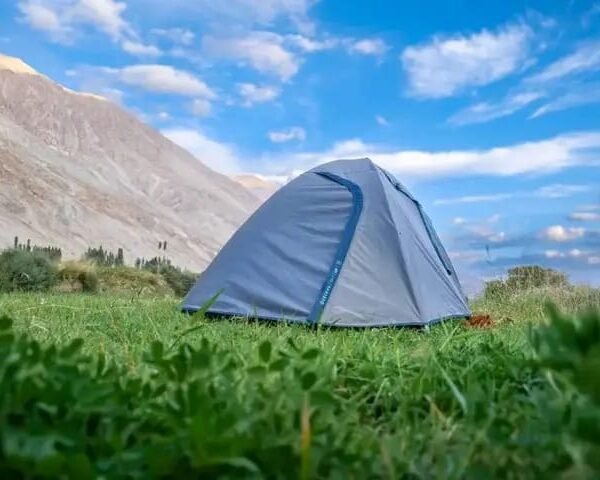Embarking on a Kedarnath trek is not just a physical adventure—it’s a spiritual experience. This sacred trail leading to the holy Kedarnath Temple is a beautiful blend of devotion and nature’s raw magnificence. In this complete Kedarnath trek guide, we’ll walk you through everything you need to know for a successful and memorable journey.
Why Choose the Kedarnath Trek?
Kedarnath is one of the most significant pilgrimage sites in India, dedicated to Lord Shiva. Located at an altitude of 3,583 meters in Uttarakhand’s Garhwal Himalayas, the temple stands against the backdrop of snow-covered peaks. The path to Kedarnath is filled with breathtaking views, gushing rivers, lush forests, and spiritual energy. It’s a dream for both trekkers and pilgrims.
Best Time to Visit
According to this Kedarnath trek guide, the ideal time to go is between May and June or September and October. During these months, the weather is relatively stable, the trails are open, and the temple is accessible. Avoid monsoon season due to the risk of landslides and slippery terrain, and winter when the area gets heavy snowfall and the temple remains closed.

Trek Route & Duration
The traditional route to Kedarnath starts from Gaurikund, which is well-connected by road from Haridwar, Rishikesh, and Dehradun. From Gaurikund, it’s a 16-kilometer trek to the Kedarnath Temple. The trail passes through:
-
Jungle Chatti
-
Bheembali
-
Linchauli
-
Kedarnath Base Camp
Most people complete the trek in a single day, but it’s recommended to break it into two if you’re not used to long-distance walking or high altitudes. You can rest at the midway stops where basic shelters and food stalls are available.
Registration and Permits
Before beginning your journey, you must register for the yatra. Registration can be done online or at checkpoints like Gaurikund. Carry a valid ID proof and medical fitness certificate if asked. These steps ensure your safety and help manage crowd flow.
Fitness Requirements
The Kedarnath trek is considered moderately challenging. While you don’t need to be an athlete, a basic level of physical fitness helps. Start walking daily, climb stairs, or go for jogs at least a few weeks before the trek. The altitude can affect breathing, so staying hydrated and taking breaks is important.
What to Pack
Packing smart is crucial for a smooth trekking experience. Here’s a suggested list:
-
Warm clothes (even in summer, nights are cold)
-
Waterproof jacket and sturdy trekking shoes
-
Woolen gloves and cap
-
Water bottle, snacks, and energy bars
-
Basic medical kit
-
Personal ID and registration documents
-
Power bank, torch, sunglasses, and sunscreen
Try to keep your backpack light yet complete with essentials. Heavy luggage can slow you down and cause fatigue.
Accommodation Options
On the way to Kedarnath, there are options for budget accommodations and tents in places like Bheembali and Linchauli. At Kedarnath, you’ll find GMVN guest houses and dharamshalas. Booking in advance is advised during peak season. Facilities are basic but adequate for an overnight stay.
Food and Water
Several food stalls along the route serve simple vegetarian meals like dal-rice, roti-sabzi, and tea. It’s recommended to eat light, avoid oily food, and drink plenty of water. Carry your own refillable water bottle as plastic is discouraged in the region.
Transport Alternatives
If you’re unable to trek, there are alternate ways to reach the temple:
-
Ponies or mules: Available from Gaurikund for hire.
-
Palkis (manual carriers): Often used by elderly or disabled travelers.
-
Helicopter service: Operates from Phata, Guptkashi, and Sirsi during the yatra season.
These options are a bit costly but can save time and effort.
Mobile Network & Emergency Support
Mobile networks are patchy in the region. BSNL and Jio work best but may be unreliable near the temple. Medical assistance is available at key points along the trek route. In case of emergency, medical camps and support staff are present to help pilgrims.
Important Trekking Tips
-
Start early: Begin your trek at dawn to avoid afternoon weather changes.
-
Stay hydrated: Drink small amounts frequently to avoid dehydration.
-
Respect local culture: The Kedarnath trek is a sacred journey—avoid loud behavior or littering.
-
Watch for altitude sickness: Headaches, nausea, or dizziness may be signs; rest if needed.
-
Stick with the group: Don’t wander off the trail—stay on the marked path.
Environmental Responsibility
This Kedarnath trek guide would be incomplete without stressing eco-responsibility. Avoid single-use plastic, carry your waste down with you, and respect the mountains and their fragile ecosystems. The region is not just a destination—it’s a divine, living space that deserves our care.
Final Thoughts
The Kedarnath trek is more than a physical challenge—it’s a transformative experience. Whether you’re drawn by faith or adventure, this journey into the heart of the Himalayas will leave you with stories to cherish forever. Proper planning, mindful trekking, and a respectful attitude will ensure your pilgrimage is safe, fulfilling, and unforgettable.

